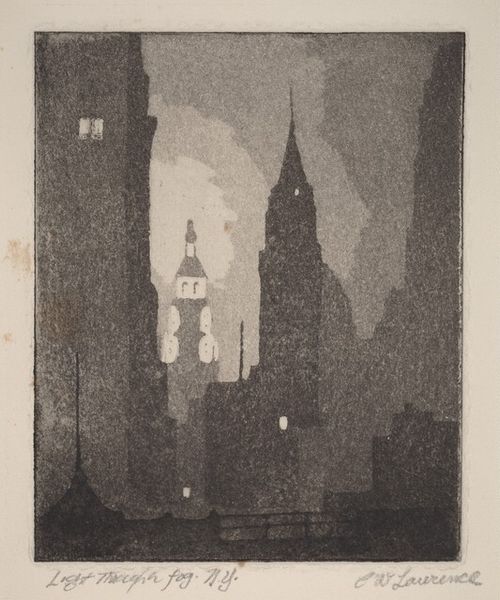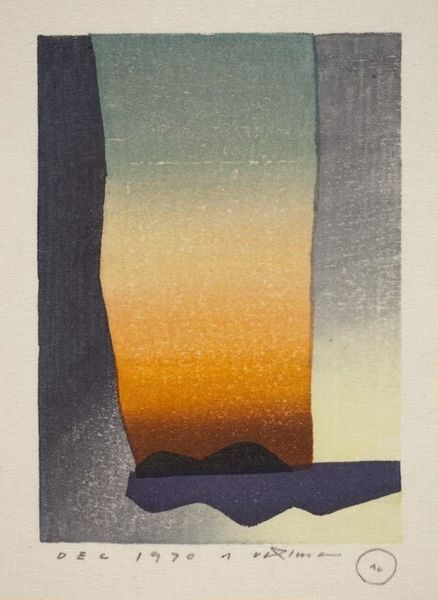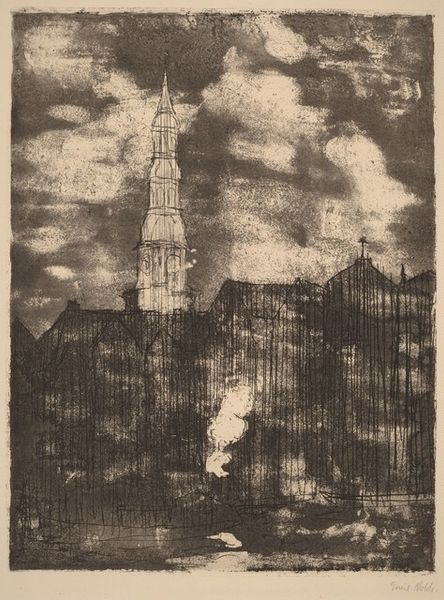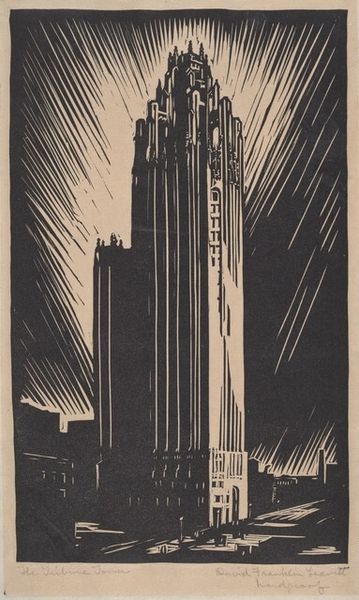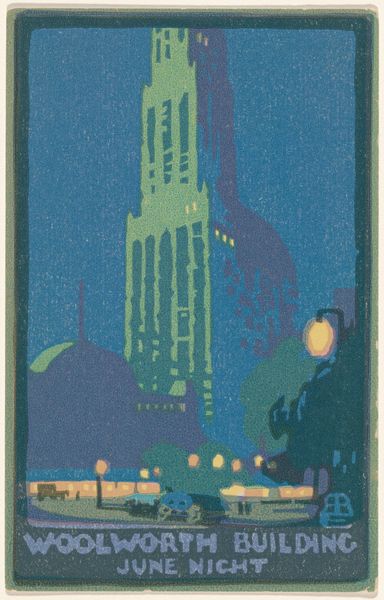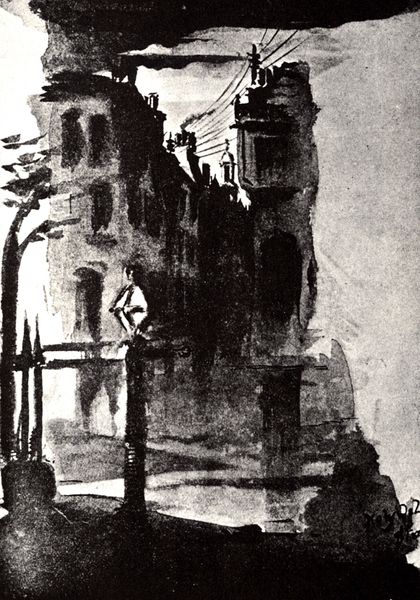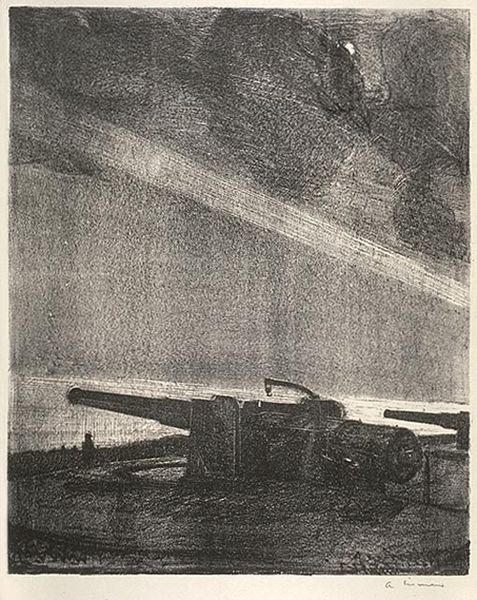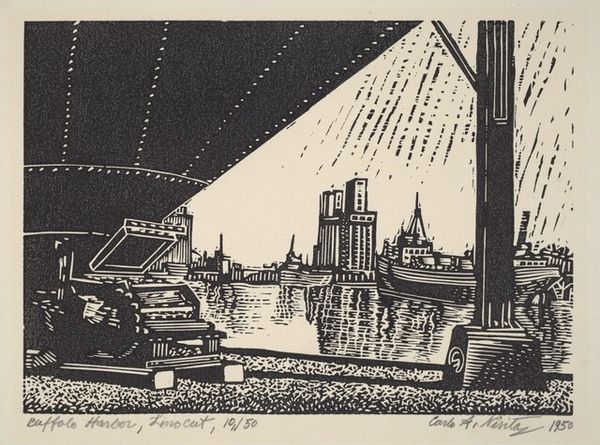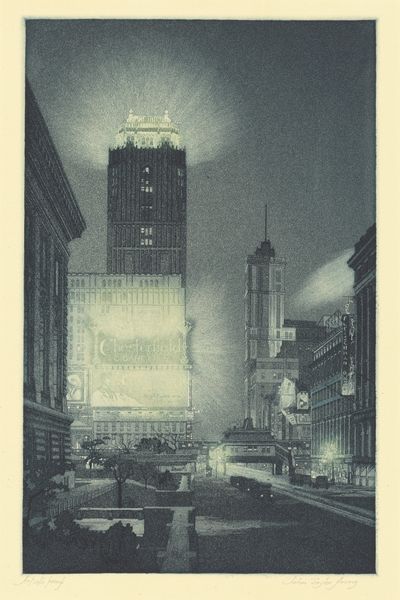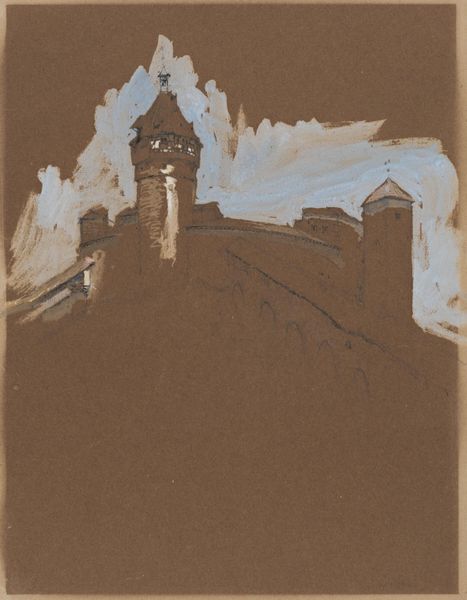
watercolor
#
sky
#
water colours
#
watercolor
#
expressionism
#
line
#
symbolism
#
cityscape
Dimensions: 24.13 x 35.05 cm
Copyright: Public domain
Curator: Egon Schiele created "Silhouette of Klosterneuburg" using watercolors back in 1906. The image displays the skyline dominated by its distinctive abbey. I find it rather imposing at first glance. The silhouetted cityscape feels stark. Editor: Stark is right. I’m drawn to how that oppressive dark mass sits below the sun’s bursting rays. The contrast isn’t just visual; it feels…symbolic. Like tradition versus burgeoning modernity. But watercolor? I wouldn't immediately guess that. It gives it such a delicate glow up top. Curator: Expressionism, certainly. Schiele captures more than a mere skyline. Look at how the rising sun emanates hope, but its colors feel diluted, as though shadowed by what lies beneath. And the sharp linear application almost divides the world neatly in half between aspiration and stagnation. Editor: Good point. Considering it's watercolor, there’s also impressive technical skill in creating that sharp definition between light and shadow, it does imply to more than just represent the city’s image; labor relations between those creating the artwork and society at large are highlighted. How much were people allowed to dream for example? Curator: Indeed. Schiele was finding his voice, influenced by the social unease of Vienna, a city caught between imperial grandeur and modernist anxieties. The materials speak subtly. This silhouette aesthetic allows an interesting reading in the context of public image versus hidden inner workings. He used it as a powerful and simplified language. Editor: And a language of labor, too. Those precise lines, the planned contrast... there's real intentionality behind the making process here. The choice to use an "easier" material such as watercolour, almost hides or obscures the labour process embedded in its creation, so perhaps is that is a social and a subversive statement in itself? Curator: Precisely. It embodies a yearning that was spreading across artistic movements at the time. The way Schiele framed his views as if presenting arguments is evident here in this visual piece as well. He presents us with arguments concerning the cultural status of his chosen subjects. Editor: Absolutely. It’s remarkable how he used materials and techniques to reveal as much as conceal, mirroring the turbulent undercurrents of that period. A window not just onto Klosterneuburg, but onto the complexities of early 20th century Europe, if only on the surface.
Comments
No comments
Be the first to comment and join the conversation on the ultimate creative platform.
